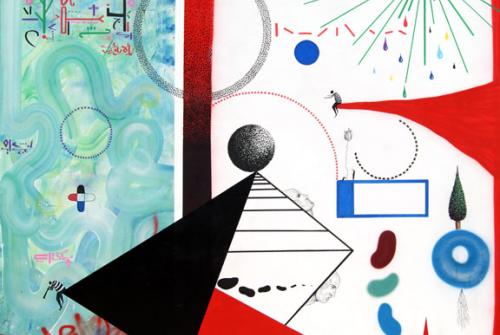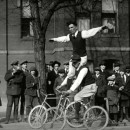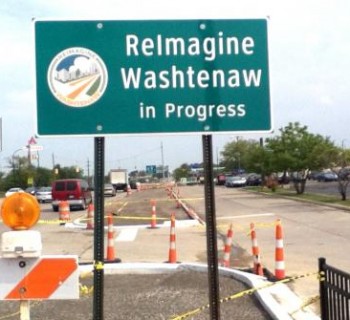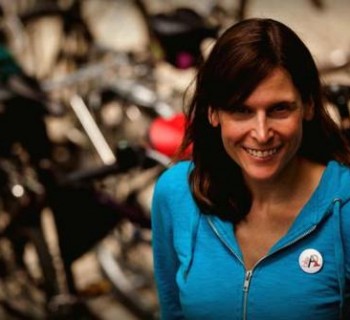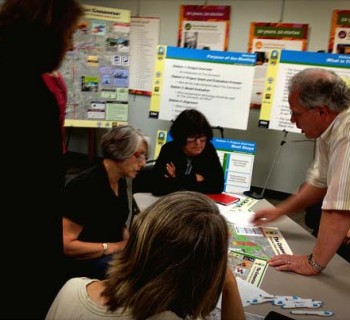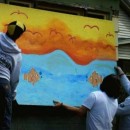Ann Arbor, Mich.—What makes a community good or bad depends on who you ask. Some still view street art as destructive and endlessly doubt its value to community building and a sense of place. But, it has existed for thousands of years and not going away anytime soon.
“I don’t know if the credit can be given to the artist themselves for making the community livable but art has an incredible way of holding a magnifying lens to how much wonder we already have around us.” ~Chaely Chartier
One thing is for sure though: Michigan-based Charlie LaCroix Art Brokerage likes it so much they imported the work of Spanish artist Xuan Alyfe for his first United States exhibition in their Ann Arbor pop-up gallery, aptly named LePop.
“Art is the phoenix of human culture,” says Chaely Chartier, co-founder of the Charlie LaCroix Art Brokerage. “It’s the first way an oppressed people begin to assert themselves that doesn’t cost anything and doesn’t take skill or talent – just raw emotion and time to kill.”
Does that mean street art helps assert the community in which it is found? Most likely.
“If you stroll through downtown Ann Arbor on a warm, sunny day, you’ll find hordes of people ‘discovering’ all of the little Easter eggs that artists have left all over the city,” Chartier says. “Public art can act as a treasure map, inviting people to explore and become intimately involved in the shape and history of their communities. It then becomes a point of pride, something to share with visitors.”
Part of Alyfe's allure, according to Chartier, was his lack of social media presence. The only impression he leaves on the internet are the occasional mentions in Juxtapoz and his Flickr pool. “We wanted to work with someone who was one of the rare, elusive, untouchable people left in the world to make his appearance here an extra special treat.”
A new twist on an old genre
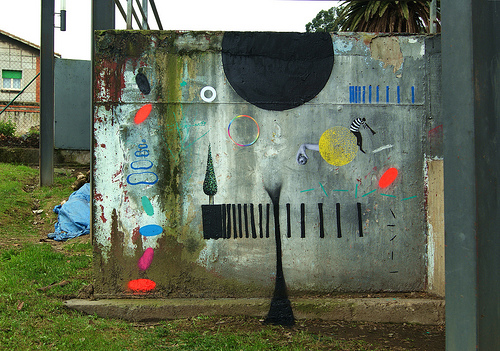 Chartier cites Detroit-based Heidelberg Project and the Powerhouse Project as innovators who are reimagining street art as we know it, taking the distressed and making it beautiful instead of vise versa. Scores more are moving into the city, ready to explore and employ socially redeeming aspects in their works.
Chartier cites Detroit-based Heidelberg Project and the Powerhouse Project as innovators who are reimagining street art as we know it, taking the distressed and making it beautiful instead of vise versa. Scores more are moving into the city, ready to explore and employ socially redeeming aspects in their works.
While Alyfe still uses paint, artists have gone to great lengths to create public art that is neither illegal or damaging to a city’s features. “Non-permanent media, such as chalk, wheat paste and paper, and even moss, have been employed as ways to avoid doing enforceable damage to property,” she says. “I think that’s softening people’s opinions of street artists as destructive hooligans.”
Judging by the originality and uplifting nature of his work, I would welcome Alyfe’s work in my city any day.
“I don’t know if the credit can be given to the artist themselves for making the community livable,” Chartier says, “but art has an incredible way of holding a magnifying lens to how much wonder we already have around us.”
Meet Chartier and Alan M. Bogl Jr., founders of the Charlie LaCroix Art Brokerage at LePop gallery, 101 N. Main Street in downtown Ann Arbor, April 20, from 8p.m.-12a.m. and see Xuan Alyfe’s work in his first ever U.S. exhibition.
The opening was Friday April 20, but if you missed it, don't worry - the show runs through May 13.


